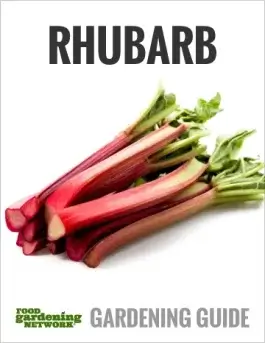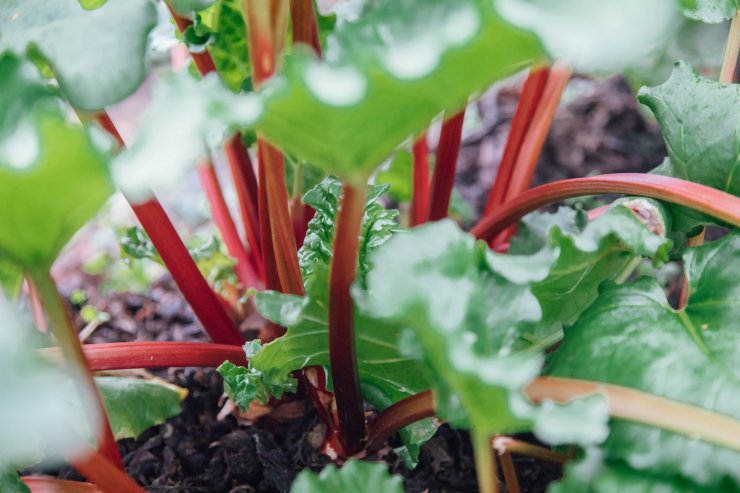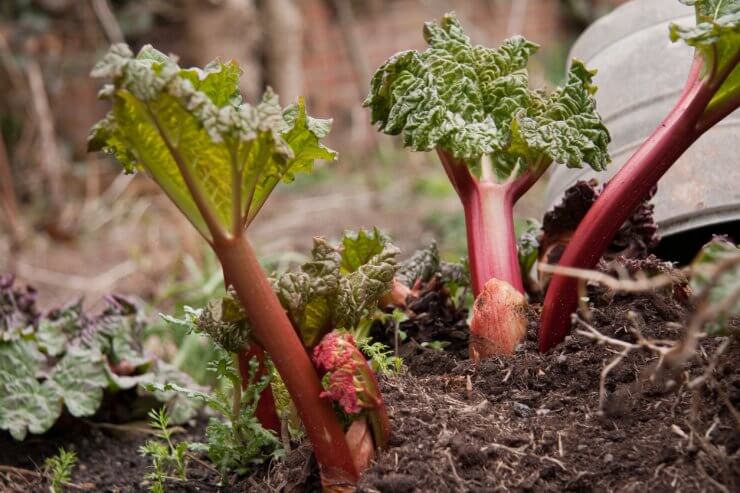
Rhubarb takes almost no effort to grow, and this perennial plant will give you tart, tender stalks for years. There’s just one thing you need to know about first: dividing rhubarb. We’ll get to that in just a moment, but first it’s worth a reminder that, while rhubarb stalks lend a lovely tang to pies and sauces, the rhubarb leaves are poisonous.
Rhubarb leaves contain oxalic acid in amounts that can cause swelling, shortness of breath — and death. But you can go ahead and compost the leaves as you harvest the stalks; the leaves make fine compost, and the oxalic acid breaks down as the leaves decay.
Don’t let that scare you away, though. Civilizations from ancient Asia to Rome have been enjoying rhubarb for some 5,000 years. And the plant has been popular in the United States since the late 1700’s. That could be because this perennial plant can live for decades with almost no special care. Nor is it especially vulnerable to diseases.
And if your plant is growing too large or you want to share with friends, you just need to go through the process of dividing rhubarb. Luckily, that’s pretty easy to do.

Dividing rhubarb and sharing the wealth
Each year, as your rhubarb plants grow, they’ll produce the next year’s buds at the outer edges of the crown. Your plants will gradually get wider…and wider. But they may not be very productive. Every four or five years, it’s time for dividing rhubarb.
The easiest way to get divisions of your rhubarb plants is to assess them early in the spring. If the crown has a lot of buds and the center isn’t producing any stalks, get out a sharp shovel and cut the plant in half or in thirds. Then replant the divisions some distance away in newly prepared planting sites.
Here’s the catch. You don’t necessarily need to dig up your plant to divide it if it’s a smaller plant. However, if your rhubarb has grown large and has a substantial root system, you may have no choice but to dig it up. In fact, some rhubarb roots can get so thick that dividing rhubarb requires a hatchet.
Try to keep a six-inch radius around the root and use a garden fork to gently lift up the plant. Do your best to avoid breaking any roots, but know that you still might snap a few.
Don’t worry. Rhubarb is quite hardy. Just keep your fingers out of the way and you will be fine. If you’re giving the rhubarb to someone else, put the division in a plastic bag for transport and have them plant it right away.
Dividing rhubarb is easy and necessary, and it’s a great way to increase your rhubarb harvest. That, of course, means extra rhubarb pie!

Transplanting rhubarb
Rhubarb will just continue to grow bigger and bigger, so if you are growing it, I have confidence you will be splitting and moving it at some point. But where? And how?
The best time to transplant rhubarb is early spring. So if you’re coming to the table with a split or division of a plant, this is the time to do it. If spring doesn’t work for you, early fall is also a good time to transplant, though riskier in colder climates where you can’t tend to it over the winter.
After transplanting, you’ll want to let your rhubarb grow for two years before you begin harvesting again just to help it establish roots, much like asparagus and most perennial plants.
When moving your rhubarb or transplanting divisions, keep in mind that rhubarb wants a spot with full sun and well-drained, loamy soil.
To plant your divided rhubarb sections, make space so that they will be three feet apart. Plant the rhubarb upright and make sure the buds are 1-2 inches below the soil. After planting, water thoroughly and then regularly to help the roots acclimate and grow for the first year. They should be more established and less needy in the second year.
If you live in a dry climate, you’ll want to make sure they get a deep soaking once a week for the first season.
In year three, your rhubarb will be ready to harvest gently for 4-6 weeks, and after that, you can use as much as you need because it should be well established by year four.
If you want to know more about growing Rhubarb, check out Remarkable Rhubarb: The Complete Guide to Growing, Cooking, and Eating Rhubarb. This gardening guide includes information about the history of this fascinating plant, different types of rhubarb, and how to grow rhubarb, complete with how much water and sunlight rhubarb needs. You’ll also get profiles of six popular varieties of rhubarb, and you can learn how healthy rhubarb is for you. Open up the gardening guide today and start growing rhubarb!


 Previous
Previous

